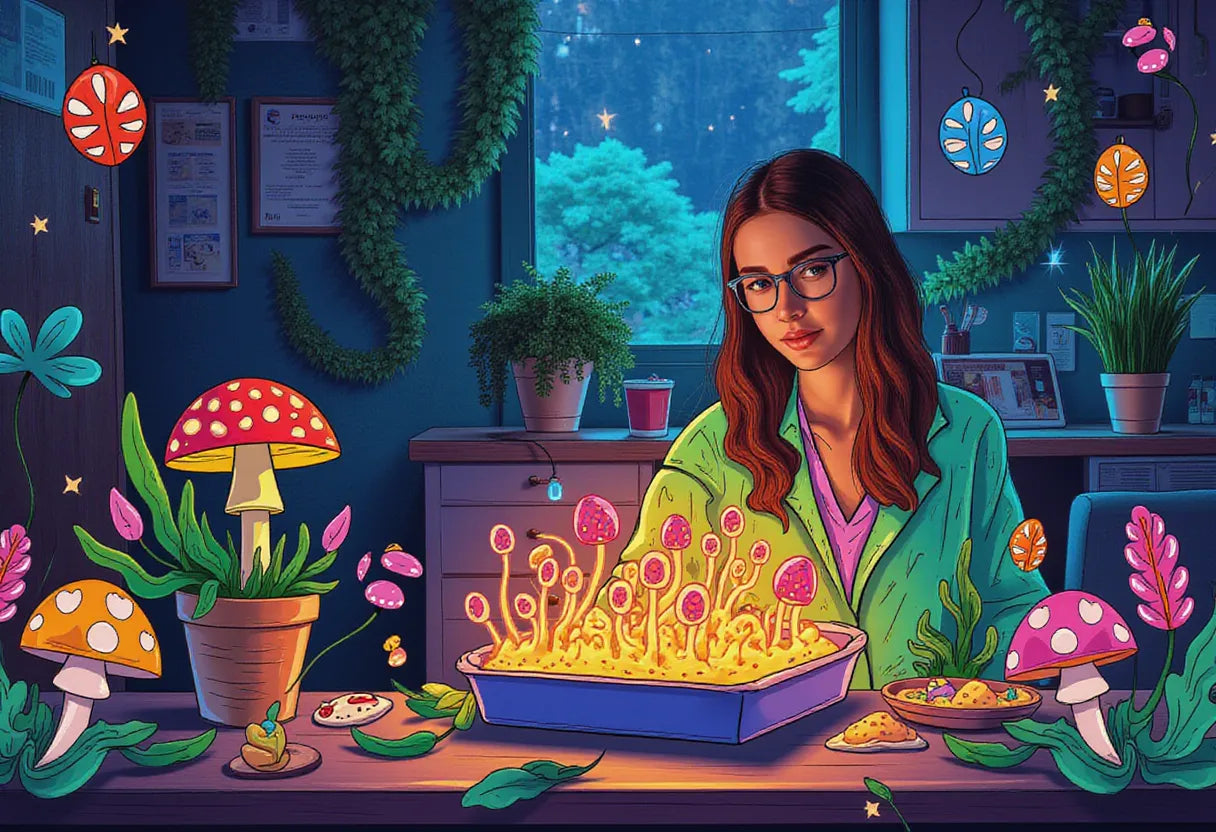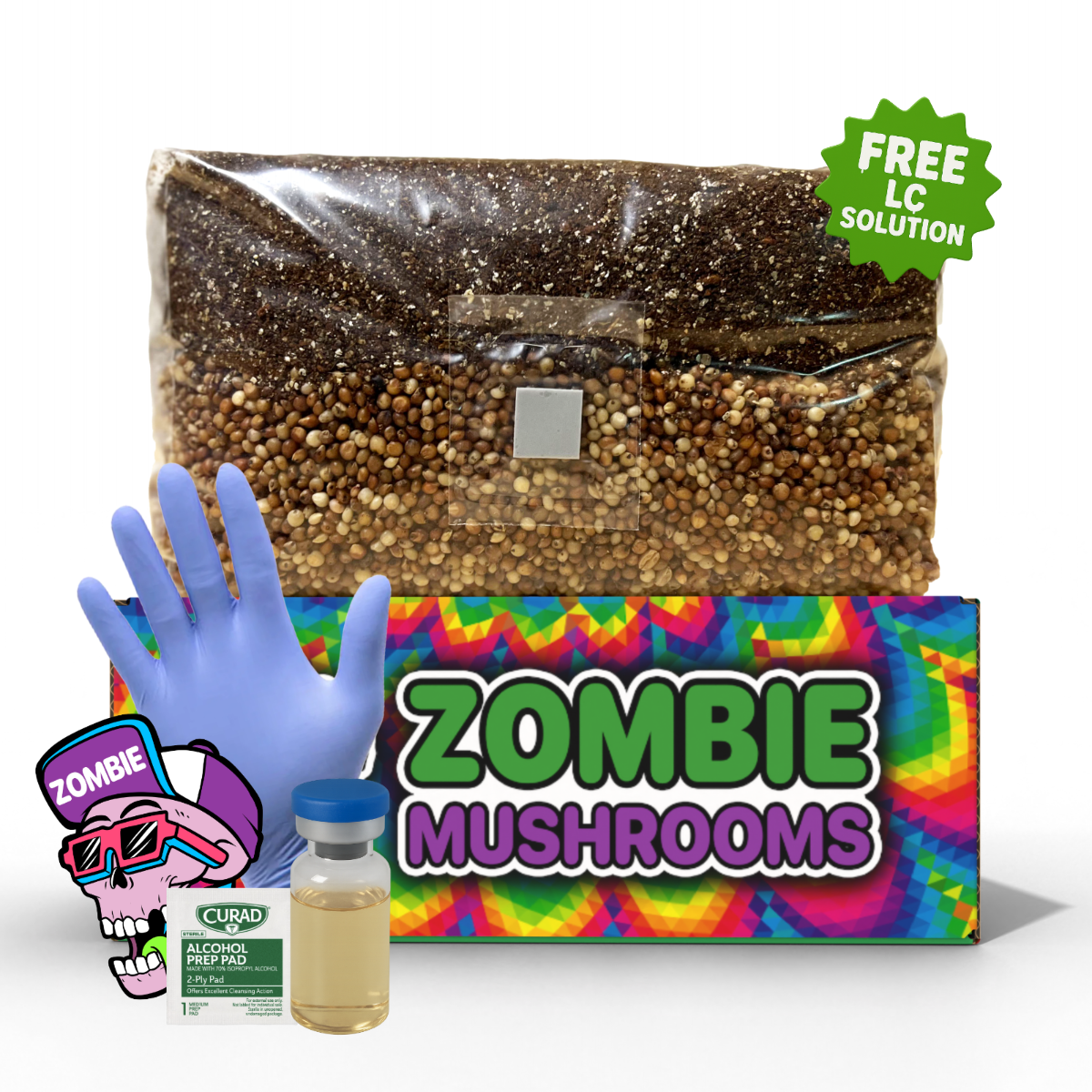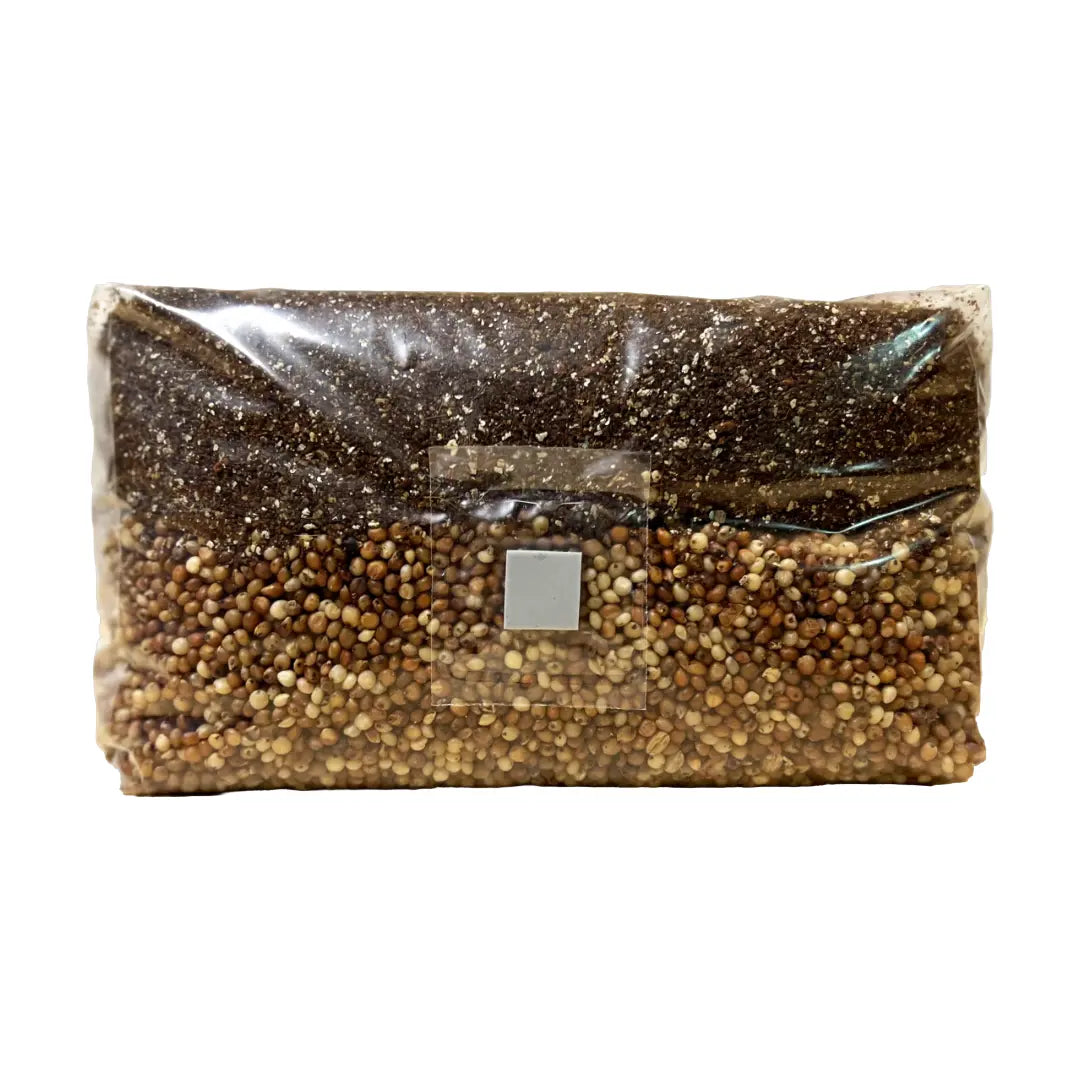⬇️ Prefer to listen instead? ⬇️

- Mushrooms like reishi and turkey tail have compounds shown to affect the immune system.
- UV-exposed mushrooms are one of the few non-animal foods naturally high in vitamin D.
- Only about 1% of mushroom species are fatally toxic, despite widespread fear.
- Lion’s mane mushrooms show promise for brain health and thinking.
- Most store-bought and grow-kit mushrooms are not psychoactive and are completely legal to grow.
Mushrooms are becoming more popular in kitchens, for health, and in home gardens. But with this comes lots of wrong ideas. People fear mushrooms are toxic, or they hear false things about how healthy they are or how easy they are to digest. If you’ve ever wondered if mushrooms are safe, or felt confused by mushroom myths, you’re not the only one. In this article, we’ll set the record straight on 9 common ideas. We'll use science and real facts so you can feel good about using or growing mushrooms safely. Grow with confidence. Our beginner-friendly grow bags make it simple to cultivate mushrooms safely at home.

Myth #1: All Mushrooms Are Toxic Unless Cooked
One idea that people keep believing is that all mushrooms are unsafe when raw. It is true that cooking can make mushrooms more nutritious and easier to digest. But not all uncooked mushrooms are dangerous. You can eat small amounts of edible kinds like white button, cremini, and portobello mushrooms raw. Think about using them as salad toppings or on veggie platters. The main thing is to eat them in small amounts.
Cooking helps lower or get rid of minor anti-nutrients like agaritine. You find trace amounts of this in some species. Cooking also helps break down chitin. This is a tough, stringy part of the cell wall that human stomachs have trouble with. And this is why cooked mushrooms are often easier on your stomach. They also offer more nutrients that your body can use.
But, not all mushrooms are safe to eat raw. And some are not safe to eat even when cooked. You should always be careful with mushrooms picked in the wild. But thankfully, only about 1% of mushroom species can kill you (North American Mycological Association, 2023). Most edible species that people grow or use for food have been safely eaten for a long time.

Myth #2: Mushrooms Lack Nutritional Value
People often don’t see mushrooms as really healthy foods. But they actually have a lot of important nutrients. They don't have many calories or much fat. But they have many important vitamins and minerals. The most popular cooking mushrooms—like shiitake, oyster, maitake, and portobello—have lots of
- B vitamins such as riboflavin (B2), niacin (B3), and pantothenic acid (B5). These help change food into energy.
- Selenium. This is a strong antioxidant that helps the immune system and the thyroid.
- Potassium. This helps with nerve signals and how muscles work.
- Ergothioneine. This is a special amino acid and antioxidant shown to protect DNA and cell health.
One great thing about mushrooms is they can make vitamin D2 when they get sunlight or UV light while growing. This is very rare in foods that don't come from animals. Studies show that eating UV-treated mushrooms can greatly increase vitamin D levels in the body. This helps make bones and the immune system stronger (U.S. Department of Agriculture, 2022).
Also, mushrooms have soluble fiber and beta-glucans. These are good for gut health and managing cholesterol.

Myth #3: Mushrooms Have No Medicinal Benefits
Thinking that mushrooms are just for cooking is a big mistake. In old medical systems—like Traditional Chinese Medicine (TCM) and Ayurveda—people have long valued mushrooms for what they can do for health. Modern science is backing up these old ideas more and more. Many species are now clearly seen as “functional mushrooms.”
Lion’s Mane (Hericium erinaceus)
This shaggy mushroom is known for helping the brain. It supports memory, focus, and overall brain health. It has compounds like hericenones and erinacines. These may help make nerve growth factor (NGF), which is needed for brain and nerve cells to grow back.
Reishi (Ganoderma lucidum)
People call reishi the “mushroom of immortality.” It helps the body handle physical and mental stress. And it supports the immune system. Eating it regularly is linked to better sleep, less worry, and a balanced immune response.
Turkey Tail (Trametes versicolor)
Turkey tail has lots of polysaccharide-K (PSK) and polysaccharide-P (PSP). Studies have looked at these compounds for how they affect the immune system. PSK is even used along with cancer treatments in Japan to help the immune system get better (Kozarski et al., 2021).
The health benefits of mushrooms are more than just their nutrients. They offer help for the immune system, the nervous system, and can even reduce swelling. More and more research supports this.

Myth #4: It’s Easy to Mistake Edible Mushrooms for Poisonous Ones
This idea has some truth to it. Picking mushrooms in the wild can be risky, especially if you are new at it and haven't had good training. Many edible mushrooms look like toxic ones. So, knowing exactly what a mushroom is is very important for people who pick them wild. However, this shouldn't make you feel bad. Most people get their mushrooms from stores, farmer’s markets, or grow kits. In these places, the type of mushroom and safety are guaranteed.
Home grow kits from sellers that are certified, like Zombie Mushrooms, use tested spores and steady environments. This takes away any guessing. These kits grow species like lion’s mane, blue oyster, or golden oyster mushrooms. They taste good, look very different from other kinds, and are completely safe to eat.
Even people who have picked mushrooms for years often use many ways to figure out what a mushroom is. Sometimes they even have experts check for them. If you are just eating mushrooms sometimes or are a beginner, the safest thing to do is not pick wild mushrooms unless someone with lots of experience is guiding you.

Myth #5: You Can Eat Any Mushroom Found in Nature if Cooked
This is maybe the most dangerous idea on this list. Cooking does help lower things that make mushrooms hard to digest and kill germs or bacteria in many edible mushrooms. But it does nothing to get rid of the poisons in deadly kinds, like those in the Amanita group.
Mushrooms like the death cap (Amanita phalloides) and destroying angel (Amanita bisporigera) have amatoxins. Heat does not destroy these at all. These poisons survive high cooking heat. They can fatally harm the liver and kidneys even if you eat just a small amount.
Even worse, signs of poisoning may not show up for hours after you eat them. This makes people think there is no danger until it is too late. Cooking is not a safety measure. Knowing exactly what a mushroom is and getting them from safe places are the only ways to avoid mushroom poisoning.

Myth #6: Mushrooms Are Hard to Digest
Some people do find mushrooms a bit harder to digest. But this does not mean you should not eat them. They have chitin. This is a substance that is part of the walls of fungal cells. Shellfish also have this same substance. Human stomachs do not have the right enzymes to break down chitin well. This can make you feel bloated or full if you eat mushrooms raw or eat a lot of them.
But, cooking is your friend here. Heat makes the stringy structure softer. It breaks down cell walls and helps you digest them better. Cooking also helps release good nutrients from the mushroom, like antioxidants and vitamins.
Also, mushrooms have prebiotics that feed the good bacteria in your gut. Beta-glucans are especially good for this. These can help increase the different types of good bacteria in your colon. And they help the immune system. Eating smaller amounts and chewing well can also help reduce any stomach problems.
Myth #7: Mushrooms Will Grow Mold or Spread It in Your Home
Many people connect mushrooms with wetness and decay. And they wrongly think that growing them inside will cause bad mold to spread through their house. Fungi are part of breaking down things in nature. But growing mushrooms for food at home is a controlled process. It is both safe and clean when you do it the right way.
Mushrooms grow from mycelium. This is a thread-like network of fungus that is not dangerous by itself. Mycelium actually helps keep things balanced in nature. It breaks down dead plant material in a good way. Problems only happen if you don’t keep things clean. Or if you keep kits in dark, wet places with no air flow. You can easily avoid this by handling them properly.
Mushroom grow kits have sterile growing material and air that can pass through. They are made to stop bad stuff from growing. If you follow the maker’s directions—like washing your hands before touching kits, putting them in places with good air, and not putting too many kits close together—you can stop mold you don’t want from growing.
Actually, growing mushrooms is no harder to handle than growing plants indoors in a tank or a water-based system. It is safe, simple, and you can learn from it.

Myth #8: All Mushrooms Are Psychoactive or “Magic”
Ideas about mushrooms often get mixed up with ones that make you hallucinate in people’s minds. The world of fungi does have species that change your mental state (like Psilocybe cubensis). But most mushrooms do not have compounds that cause altered mental states.
Experts have listed about 14,000 mushroom species. Fewer than 200 of these are known to have psychoactive compounds like psilocybin (Guzmán, 2008). This means less than 1.5% of all mushroom species change your mind.
The mushrooms you see in food stores, health products, or grow-at-home kits—like lion’s mane, reishi, shiitake, oyster, and maitake—are 100% not psychoactive. These fungi offer health benefits related to helping the immune system, balancing digestion, and even helping your mood. But they do not cause hallucinations or a feeling of extreme happiness.
This idea makes people unfairly judge fungi. And it stops people from understanding all the good things fungi can do, especially for health and nutrition.
Myth #9: Growing Mushrooms is Unsafe or Illegal
Many people think growing mushrooms is controlled by laws or is not allowed at all. But this confusion usually comes from laws about psychoactive species like psilocybin mushrooms. In most countries, and across the U.S. (except in a few areas), growing legal edible or medicinal mushrooms is completely fine and perfectly safe.
Growing gourmet and functional mushrooms at home—like king oyster, lion’s mane, or cordyceps—is both legal and getting more popular. With home grow kits now available, even people who have never done it before can grow mushrooms inside without needing big tools or special skills.
These kits are made with the user’s safety in mind. They use growing material that has been treated, spaces with filters, and spores that have been checked. Most popular sellers, including Zombie Mushrooms, test their materials carefully in labs. This makes sure they are good quality and safe.
So, to answer the question "Are mushrooms safe to grow?"—yes, completely, if you are working with legal types and keeping things clean while you grow them. It is a fun way to learn about food and health.
Mushrooms should not have a bad name. If you know what you are doing and get them from safe places, they are one of the safest, most nutritious, and even medicinal foods you can find. Letting go of these wrong ideas opens up a world of benefits for your gut health, immune system, and gives you new, tasty ingredients.
If you are interested in trying mushrooms for the first time, or starting to grow them inside yourself, think about using a grow kit for beginners. It gives you control—and trust—right in your hands.
Ready to see what mushrooms can really do? Look at grow kits for beginners and supplies for growing mushrooms yourself at Zombie Mushrooms.



